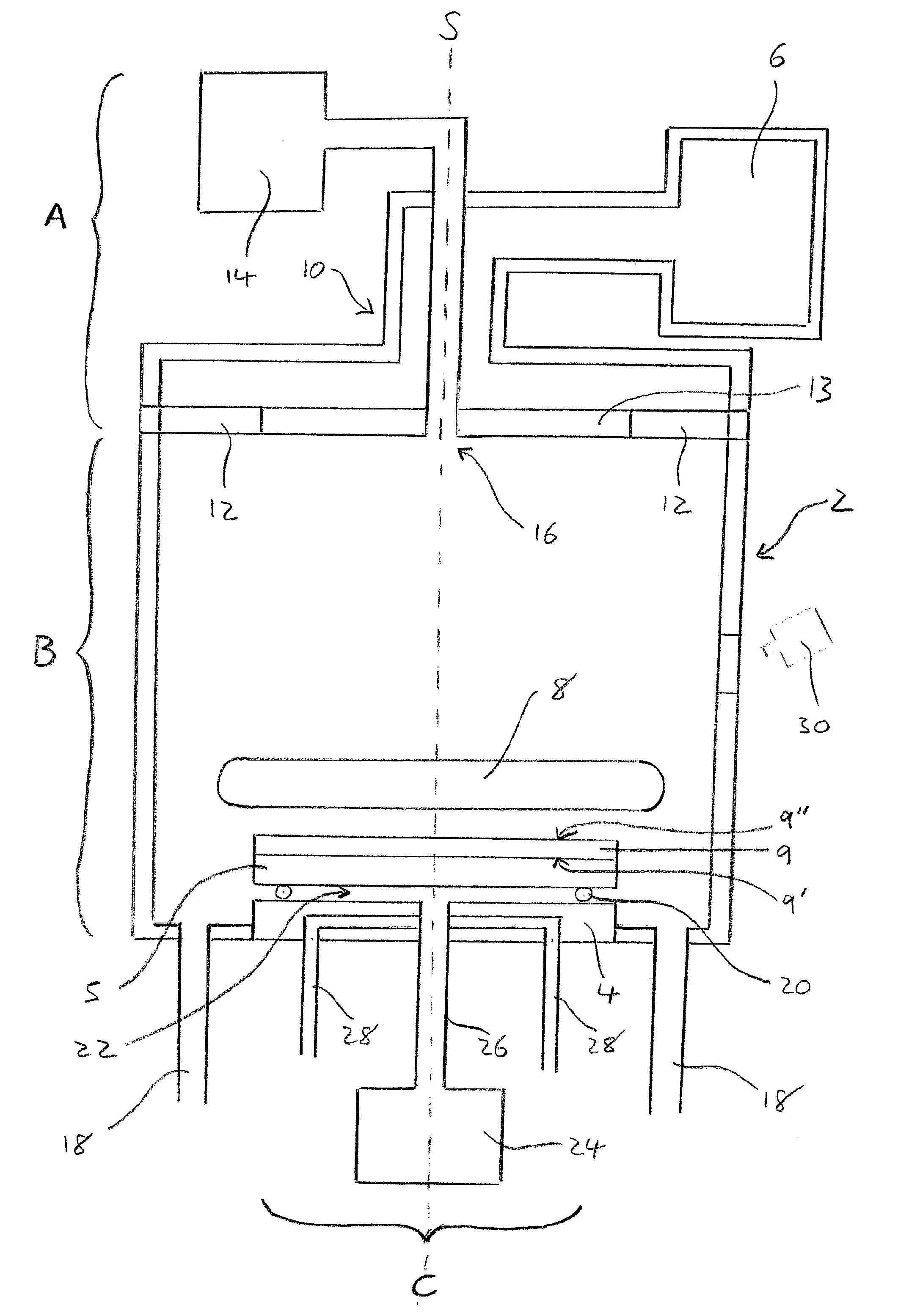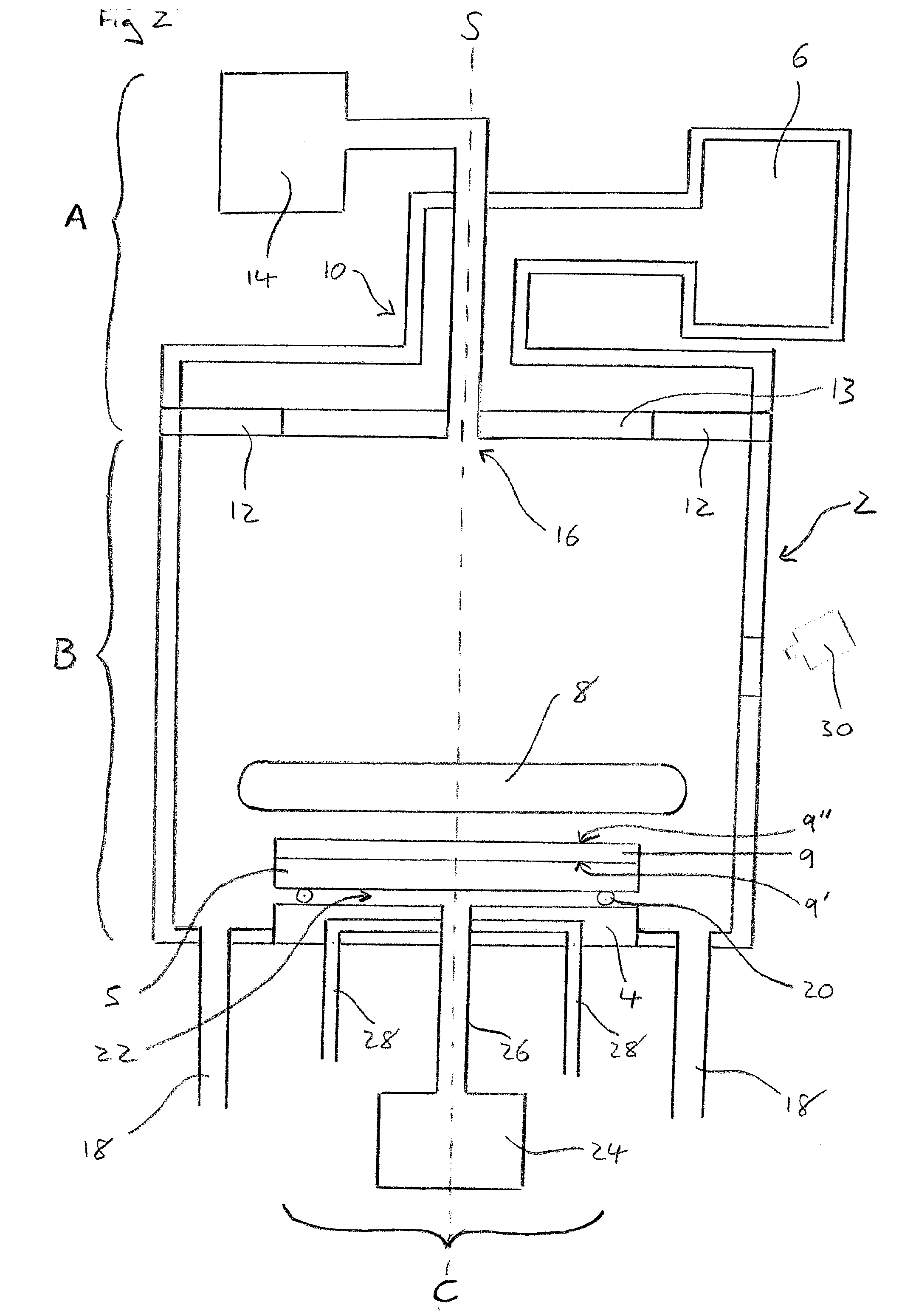Thick polycrystalline synthetic diamond wafers for heat spreading applications and microwave plasma chemical vapour depositon synthesis techniques
a technology of synthetic diamond and microwave plasma, which is applied in the direction of synthetic resin layered products, transportation and packaging, and semiconductor lasers, etc., can solve the problems of increasing time and associated expense, and growing polycrystalline cvd synthetic diamond wafers to larger areas without significant reduction in the quality and thermal performance of the material around peripheral regions. , to achieve the effect of reducing the cost per product wafer, negating any economic benefit, and reducing the quality and thermal performan
- Summary
- Abstract
- Description
- Claims
- Application Information
AI Technical Summary
Benefits of technology
Problems solved by technology
Method used
Image
Examples
Embodiment Construction
[0042]The microwave plasma reactor illustrated in FIG. 2 comprises the following components: a plasma chamber 2; a substrate holder 4; a substrate 5; a microwave generator 6; plasma 8 generated in use for growing a polycrystalline CVD diamond wafer 9 having a nucleation face 9′ and a growth face 9″; a microwave coupling configuration 10; dielectric window 12; source gas container system 14; one or more gas inlets 16; one or more gas outlets 18; spacer wires or spacer pads 20 to define a gas gap 22 between a supporting surface of the substrate holder 4 and a rear surface of the substrate 5; and a substrate temperature control arrangement comprising a gas supply system 24 coupled to the gas gap 22 via a supply pipe 26, and a coolant liquid supply system 28 for cooling the substrate holder.
[0043]The microwave plasma reactor can be considered to comprise three subsystems: (A) gas and microwave delivery systems configured to deliver process gases and microwaves into a plasma chamber thro...
PUM
| Property | Measurement | Unit |
|---|---|---|
| width | aaaaa | aaaaa |
| temperature | aaaaa | aaaaa |
| temperature | aaaaa | aaaaa |
Abstract
Description
Claims
Application Information
 Login to View More
Login to View More - R&D
- Intellectual Property
- Life Sciences
- Materials
- Tech Scout
- Unparalleled Data Quality
- Higher Quality Content
- 60% Fewer Hallucinations
Browse by: Latest US Patents, China's latest patents, Technical Efficacy Thesaurus, Application Domain, Technology Topic, Popular Technical Reports.
© 2025 PatSnap. All rights reserved.Legal|Privacy policy|Modern Slavery Act Transparency Statement|Sitemap|About US| Contact US: help@patsnap.com



